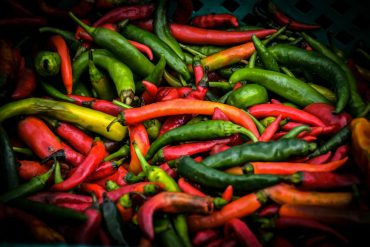

In a previous article, we explained how most naturally occurring drugs found in nature act as a pest repellant. In this article we want to continue with the theme of exploring natural chemicals that act to deter pests. This time we are discussing capsaicin. You may be familiar with this name as it is what actually makes peppers taste spicy. Humans have also created synthetic versions of it for self-defense (pepper spray) and topical analgesic purposes.
Over millions of years, plants had to develop their own defenses against other organisms trying to consume them in a way not helpful to the plant. The pepper is the fruiting part of the plant which contains seeds necessary for reproduction. But the pepper also contains capsaicin to ward off insects and certain mammals looking for an easy meal.
Levels of capsaicin vary depending on the type of pepper. Some chilis have very little capsaicin while peppers like the habanero and some varieties of jalapenos are much more spicy. The amount of capsaicin in a pepper directly correlates to how spicy it is. These levels are measured on something called the Scoville scale. This is a spiciness measurement system developed by Wilbur Scoville in 1912.
The three main enemies of a plant’s fruit are insects, mold and certain mammals. Insects will destroy the pepper without carrying out the main job of the fruit, which is to disperse seeds far and wide. Mold too will destroy the pepper and not allow it to do its job. Scientists found that putting mold into dishes with capsaicin will stymie its growth and sometimes kill it.
Certain mammals are a problem for pepper plants as well. This is because their molars actually destroy the seeds when being chewed. Can you guess what type of animal doesn’t have taste buds which are sensitive to capsaicin? Birds of course. These flying creatures are the perfect animal to consume a pepper while leaving the seeds intact and inevitably disburse those seeds abroad.
Of course there are exceptions to every rule. An insect called Acroleucus coxalis is able to puncture the pepper with its proboscis, a needle-like tongue, and suck out the spicy juice with little hesitation. It may have developed this tolerance to the capsaicin over time. Worse yet, if there are multiple holes from insects and a depletion of capsaicin from the pepper, certain molds are able to grow. Nature seemingly always finds a way and the seesaw battle of defense vs offense continues.
